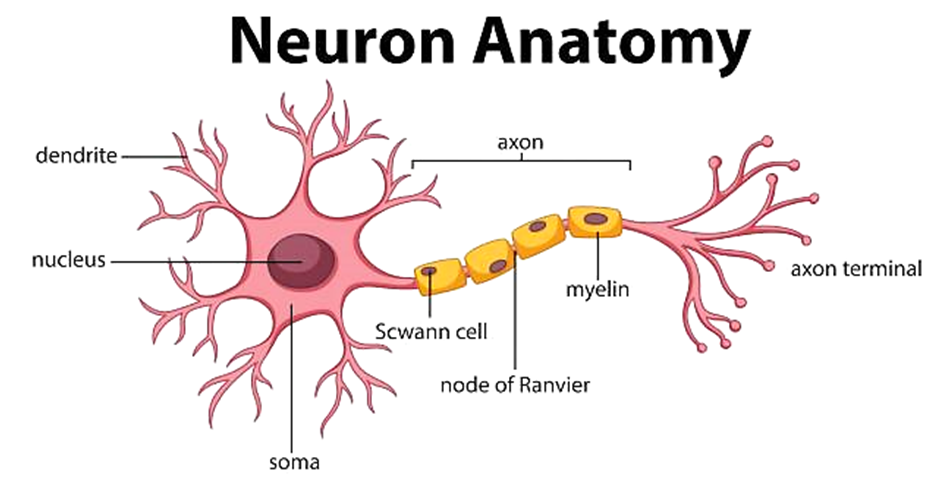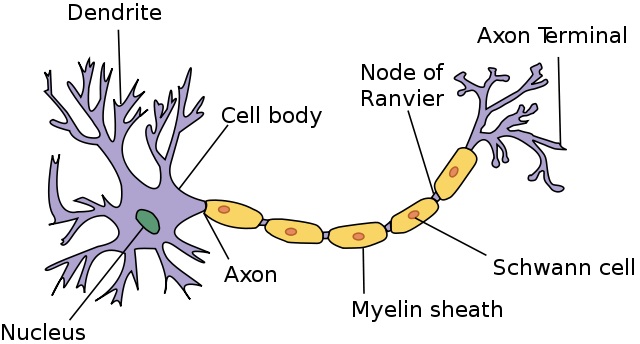The Nervous Tissue
- How do we react to stimuli?
This is becaus e of the nervous tissues present in our body. They are capable of transmitting information quickly from the brain to different parts of the body and vice-versa.
- Therefore, nervous tissues are found in nerves, brain, and spinal cord.
- The Nervous tissue is made up of cells called the Nerve Cells or Neurons.
- These neurons connect together to form the nerves of our body.
Structure of a Neuron
-
- It is an elongated cell with a Cell Body that consists of some branch-like structure called Dendrites.
- There is a Nucleus present in the centre of the cell body.
- The Nerve Endings of the cell are connected with the cell body via Axon.
- A nerve cell can be up to 1 m long.

Structure of Neuron
1.Dendrites
- They are tree-like extensions (highly-branched) at the beginning of a neuron.
- They increase the surface area of the neuron.
- They receive chemical signals from different neurons of the body.
- They then convert these chemical signals into electrical signals and pass them to the neuron cell body.
- A neuron can have a single dendrite or multiple dendrites
2. Cell Body
- Also called Soma.
- The main function of the cell body and nucleus of the neuron is to maintain the functionality of the cell.
- It does not play an active role in the transmission of the signal.
- It produces proteins that are required by different parts of the neuron to work properly.
- It contains different cell organelles such as mitochondria, Golgi apparatus etc that perform various functions of the cell.
3. Axon
- Neurons have one axon in general.
- It is a long structure that connects the cell body to the terminals and it also connects with other neurons, cells and organs of the body through nerve terminals.
- It allows in fast transmission of signals. The larger the diameter of the axon the faster it will transmit signals.
- It is covered with a special insulating substance called myelin. It helps in rapid transmission of signals.
- Books Name
- Yash Tyagi Coaching Science Book
- Publication
- ACERISE INDIA
- Course
- CBSE Class 9
- Subject
- Science
Nervous Tissue
Nervous tissue
This tissue helps us in thinking, listening, conveying messages, etc. On the whole, we can say that it helps in control and coordination in the body. It is a specialized tissue that helps in transmitting messages within our body. It contains highly specialized cells called neurons. The neurons have the ability to receive stimuli from within or outside the body and to conduct impulses to different parts. Each neuron consists of:
- Cyton
- Dendrite
- Axon

The irregular structure called cell body encloses a nucleus in neuroplasm. From cell body, small branches arise on upper side called dendrite. On the lower side, it gives out only one branch that is elongated called axon. The whole neuron is made up of neurolemma. It has a fatty layer on it as a modulated sheath that creates nodes of ranvier that help in saltatory conduction. Axon ends into nerve endings.
Function of neuron
- It is to form nerves that further helps in control and coordination of body.

 Vaishnav Publication
Vaishnav Publication
 ACERISE INDIA
ACERISE INDIA
